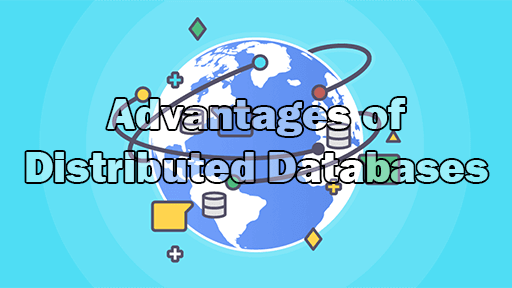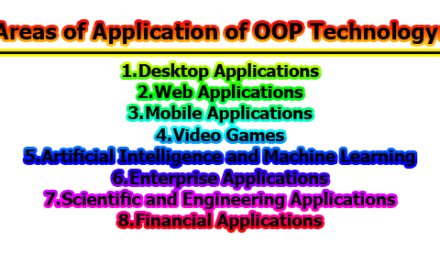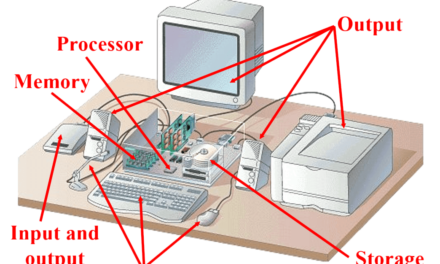Advantages of Distributed Databases:
The advent of modern technologies and the exponential growth of data have led organizations to reconsider their approach to database management. Traditional centralized databases, while effective, often face challenges in terms of scalability, performance, and availability. Distributed databases have emerged as a powerful solution to address these challenges by distributing data across multiple nodes or locations. Here are some of the necessary advantages of distributed databases.
1. Improved Availability: One of the primary advantages of distributed databases is improved availability. In a distributed environment, data is stored across multiple nodes or locations. This redundancy ensures that even if one node fails or becomes unavailable, the system can still operate seamlessly by retrieving data from other nodes. This high availability minimizes downtime, ensuring that critical applications and services remain accessible to users, leading to increased overall system reliability.
2. Improved Performance: Distributed databases can enhance system performance by distributing the processing load across multiple nodes. Each node can independently process queries, resulting in parallel execution and reduced response times. This distributed processing capability allows organizations to handle large volumes of data efficiently and meet the demands of complex and resource-intensive applications, leading to improved overall system performance.
3. Modular Development: Distributed databases enable modular development, allowing organizations to design and implement systems in a more flexible and scalable manner. Different components of a distributed database system can be developed and modified independently, making it easier to adapt to evolving business requirements. This modular approach facilitates agile development practices, enabling organizations to respond quickly to changing market conditions and user needs.
4. Scalability: Scalability is a key advantage of distributed databases. As the volume of data or the number of users increases, organizations can scale their distributed database systems horizontally by adding more nodes to the network. This horizontal scalability ensures that the system can handle growing workloads without experiencing performance bottlenecks. It provides a cost-effective way to expand infrastructure in line with business growth.
5. Low Communication Cost: Distributed databases can lead to lower communication costs compared to centralized databases. In a distributed environment, data is stored closer to the point of use, reducing the need for extensive data transfer over long distances. This localized data access minimizes communication latency and bandwidth usage, resulting in more efficient data retrieval and improved overall system performance.
6. Reliability: Reliability is a crucial factor in database management, and distributed databases excel in providing robust and reliable systems. With data distributed across multiple nodes, the failure of one node does not compromise the entire system. Redundancy and data replication mechanisms ensure that the system can recover from failures, contributing to higher levels of reliability in distributed database architectures.
7. Fault Tolerance: Distributed databases are inherently fault-tolerant, meaning they can continue to operate even when individual components or nodes fail. Through mechanisms such as data replication and load balancing, distributed databases can withstand hardware failures, network issues, or other disruptions. This fault tolerance enhances system resilience and ensures uninterrupted service, critical for mission-critical applications and services.
8. Fragmentation Transparency: Fragmentation transparency is a key feature of distributed databases, allowing organizations to distribute data across multiple nodes without impacting the application layer. From the perspective of application developers and end-users, the distributed nature of the database is transparent. This transparency simplifies the development and maintenance of applications, as developers can interact with the database as if it were a centralized system.
9. Local Autonomy: Distributed databases offer local autonomy to individual nodes within the network. Each node can have its own schema, data model, and administrative controls. This local autonomy empowers organizations to tailor specific nodes to the needs of particular business units or geographical locations, allowing for greater flexibility in database management.
10. Security: Security is a paramount concern in database management, and distributed databases provide robust security measures. Data encryption, access controls, and authentication mechanisms are implemented at both the individual node and network levels. The distributed nature of the database also adds an additional layer of security, as compromising one node does not grant unauthorized access to the entire dataset.
11. Better Response: The distribution of data and processing across multiple nodes enables better response times for queries and transactions. With parallel processing capabilities, distributed databases can handle concurrent requests more efficiently, resulting in quicker response times for users. This improved responsiveness is crucial for applications requiring real-time data access, such as online transaction processing (OLTP) systems.
12. Cost: Cost-effectiveness is a significant advantage of distributed databases, especially in terms of infrastructure and maintenance. The ability to scale horizontally allows organizations to incrementally add resources as needed, avoiding large upfront investments. Additionally, the improved utilization of resources and reduced downtime contribute to lower operational costs over the long term.
13. Easier Expansion: Distributed databases facilitate easier expansion of infrastructure to accommodate growing data volumes and user demands. Organizations can seamlessly add new nodes to the network, allowing for incremental and modular expansion. This ease of expansion is particularly beneficial for businesses experiencing dynamic growth or those operating in unpredictable environments.
14. Data Integrity: Maintaining data integrity is crucial in any database system, and distributed databases implement mechanisms to ensure the consistency and accuracy of data across multiple nodes. Techniques such as distributed transactions and consistency protocols guarantee that updates to the database are synchronized across all nodes, preserving data integrity even in distributed environments.
15. Data Recoverability: Distributed databases enhance data recoverability through features such as data replication and backups. In the event of a node failure or data corruption, organizations can recover lost or corrupted data from replicas stored on other nodes. This redundancy ensures that critical data is not lost, contributing to a robust data recovery strategy.
16. Organizational Structure: The distributed nature of databases can align with the organizational structure of large enterprises. Different business units or departments may have their own dedicated nodes, allowing for decentralized data management. This organizational alignment can streamline operations, enhance data access for specific teams, and improve overall agility in responding to departmental requirements.
17. Data Sharing: Distributed databases facilitate efficient data sharing among different parts of an organization. With data distributed across multiple nodes, various teams or departments can access and update relevant information without causing bottlenecks or conflicts. This seamless data sharing promotes collaboration and ensures that different parts of the organization have access to the most up-to-date information.
18. Economics: The economics of distributed databases are favorable for organizations seeking cost-effective solutions. The ability to scale horizontally reduces the need for massive upfront investments in centralized infrastructure. Additionally, the distributed architecture promotes resource efficiency, optimizing the utilization of hardware resources and minimizing operational costs over time.
19. Faster Data Access: The distribution of data across multiple nodes enables faster data access, as users can retrieve information from nodes located closer to their geographic location. This localized data access minimizes latency, improving the overall speed and responsiveness of applications. Faster data access is particularly critical in scenarios where real-time decision-making is essential.
20. Local Control: Distributed databases provide local control to individual nodes, allowing them to manage their data independently. This decentralized approach to control empowers local administrators to tailor their nodes to specific requirements without affecting the overall system. Local control enhances flexibility and responsiveness in adapting to the unique needs of different business units or geographic locations.
21. Replication Independence: Replication independence is a key feature of distributed databases, allowing organizations to replicate data across multiple nodes without impacting the consistency of the entire system. This independence enables organizations to implement data replication strategies based on specific requirements, such as improving fault tolerance, enhancing data access speed, or supporting geographically distributed teams.
In conclusion, distributed databases offer a multitude of advantages that address the evolving needs of modern organizations. From improved availability and performance to scalability, low communication cost, reliability, fault tolerance, and beyond, the distributed architecture provides a robust foundation for efficient and effective data management. The modular development approach, coupled with benefits such as local autonomy, security, and cost-effectiveness, makes distributed databases a compelling choice for businesses seeking flexible and scalable solutions.
As organizations continue to navigate the complexities of data management in the digital age, distributed databases emerge as a strategic enabler, providing the framework for innovation, growth, and resilience. The advantages discussed in this exploration underscore the transformative impact of distributed databases on organizational agility, data accessibility, and overall operational efficiency. Embracing the distributed paradigm is not merely a technological choice but a strategic decision that positions organizations to thrive in a data-centric landscape.

Assistant Teacher at Zinzira Pir Mohammad Pilot School and College










